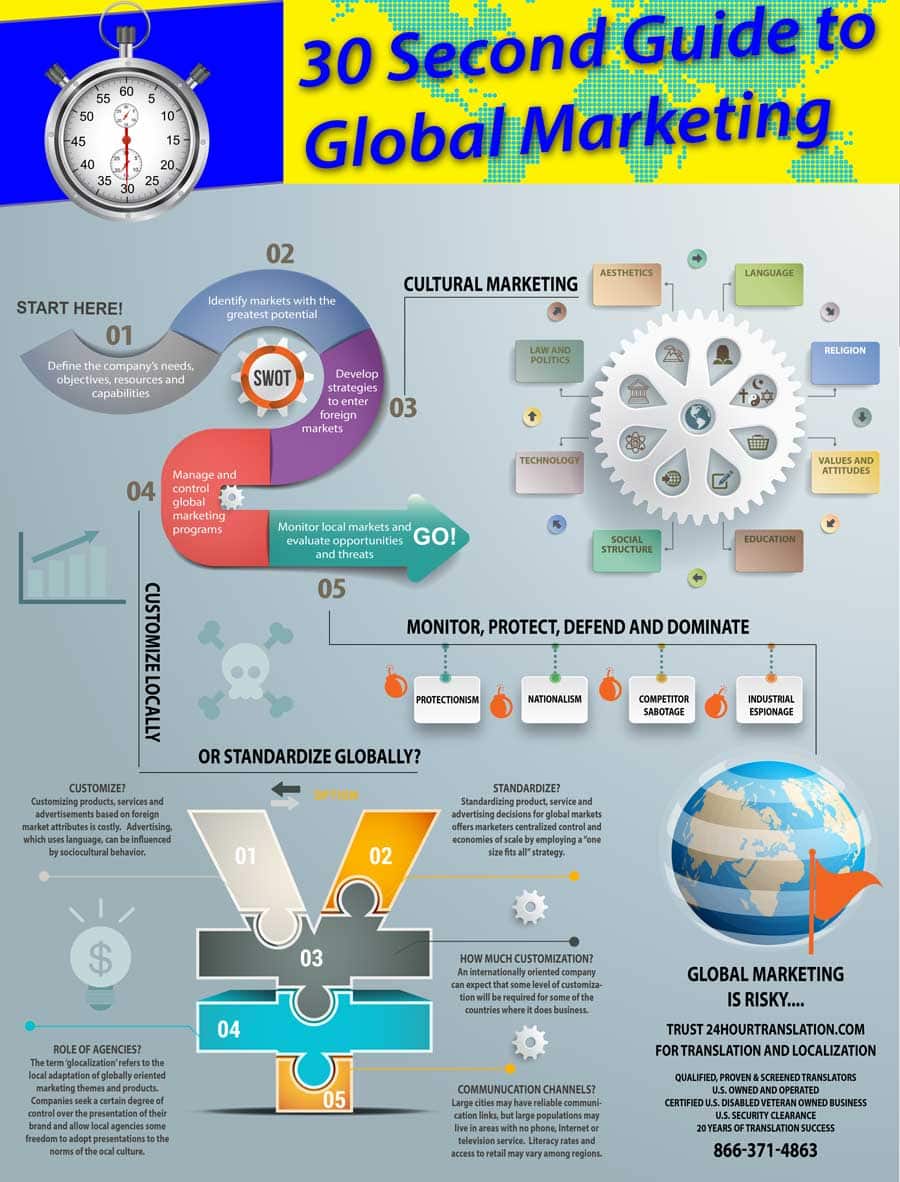One of the main reasons companies forgo international expansion is lack of information about customer preferences. In today’s multicultural world, businesses understand the risk involved in taking a broad view towards diverse markets. They know that breakthroughs and product advancements have value only when local markets will pay for them. To determine the potential for success in a foreign market, businesses must develop and evaluate a detailed global marketing strategy.
Global Marketing Strategy Challenges
Global marketing strategy must overcome many challenges. Diverse political, economic, socio-cultural, technological, linguistic, legal and environmental factors interact to affect a company’s successful entry and sustained growth in a foreign market. Analyzing the 196 countries in the world today creates a daunting, if not impossible, task. Identifying the tedious and intricate details of each country and its interactions also multiplies the likelihood of flawed research conclusions.
Consider India, the second most populous country in the world, as an example. In economic strength, India’s GDP per capita is comparable to China’s in 2005. India’s economy is fueled by its 800 million Millennials and Gen Z’s born after 2000, who have improved education and purchasing power. India’s middle class is still relatively small, consisting of approximately 27 million people, but the culture is unique. Indian consumers, who are value driven, are willing to trade up, but only if they see measurable benefits. They will pay more for premium efficiency in a new appliance or car, but they are much less likely to purchase aspirational or luxury goods. They differ from the Chinese middle class, who seek luxury products that are consumed in public and represent status symbols, rather than value goods based primarily on their intrinsic value. Thus Indian consumers, who are very careful about spending money, negotiate the lowest prices. However, while they are unlikely to splurge on big ticket items, they invest lavishly in weddings.
Many Western businesses fail to understand the vast cultural differences between the United States and India. While global marketing strategy development and implementation can be conducted internally, businesses predictably lack the resources and understanding to do so effectively. In addition, reliable sources of secondary data can be difficult to locate or are non-existent. A recommended first step is to hire a language translation services company. A full-service agency can recommend local marketing research companies and provide insights into local languages, business costs, and technical and trade infrastructure. They can also recommend translation services that are capable of translating content into the local dialect. Local marketing research companies can provide contact lists that include phone numbers and e-mail addresses of the target market, both essential resources for reducing the risks of entering a foreign market.
Global Marketing Strategy & Research Objectives
Regardless of whether a company undertakes the research project on its own or outsources it to a local provider, the research objectives should be the same:
1. Evaluate the marketing environment in terms of economic, political, socio-cultural, and technological factors to identify and monitor key trends, regulations, costs and potential obstacles that might influence your decision.
2. Identify whether a market exists for your product, whether it is growing, and how competitive it is. Identify the major competitors, their market share, their strategies, and their strengths and weaknesses.
3. Estimate the size of the total market, the costs involved in entering that market, and your market share potential and profitability of entering the market. With this information, prepare an optimal marketing mix.
Businesses cannot take risks when marketing goods and services globally. They must fully identify the key economic, political, socio-cultural, and technological factors that determine long-term success and then develop a marketing mix that targets the foreign market effectively. While the risks are great, good marketing research can eliminate many of them and is essential to companies prepared to take the leap.


I think these strategies are worth taking note of. Most times businesses fail as a result of poor marketing strategies. This is indeed a key factor to every successful business. Thanks for sharing!